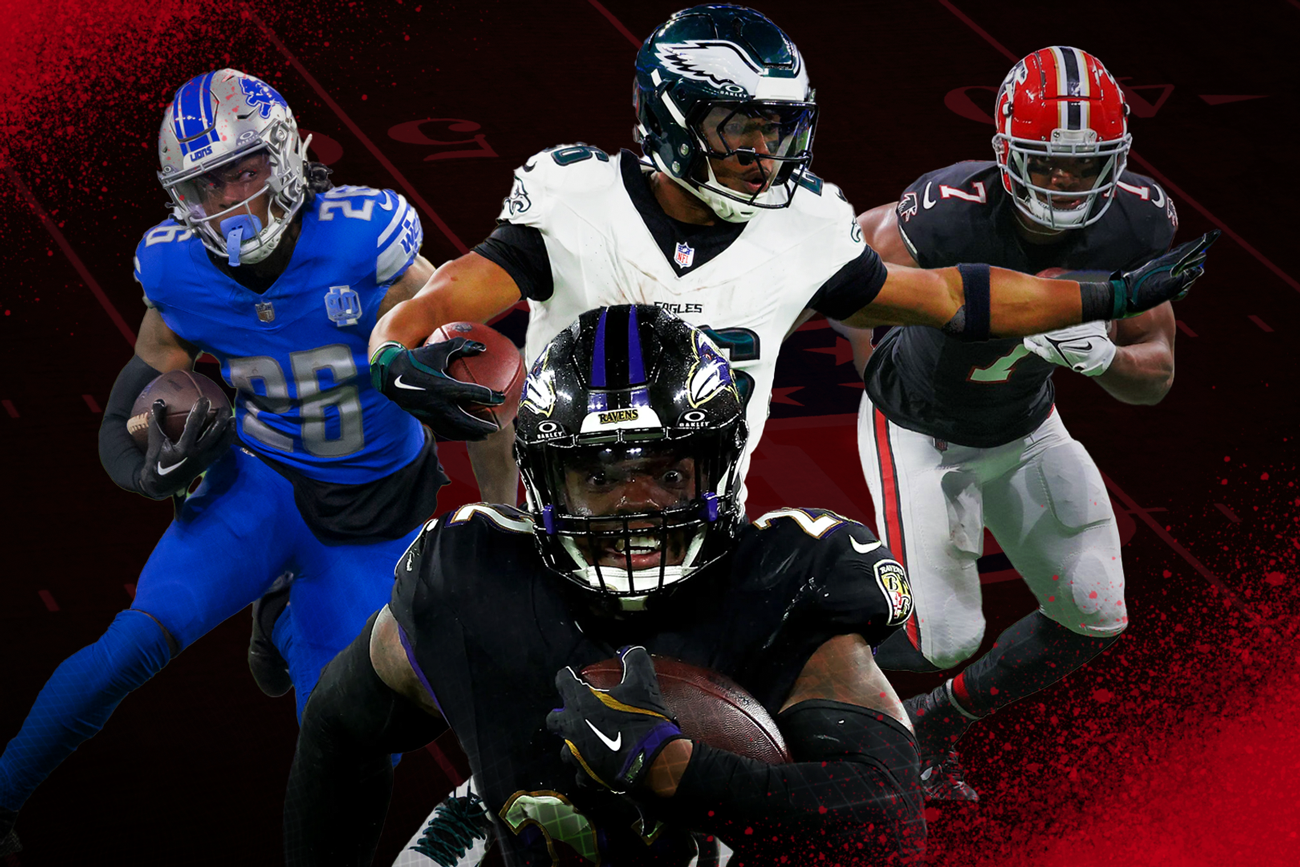The Running Back Is Back! Examining the 2024 stable of backs
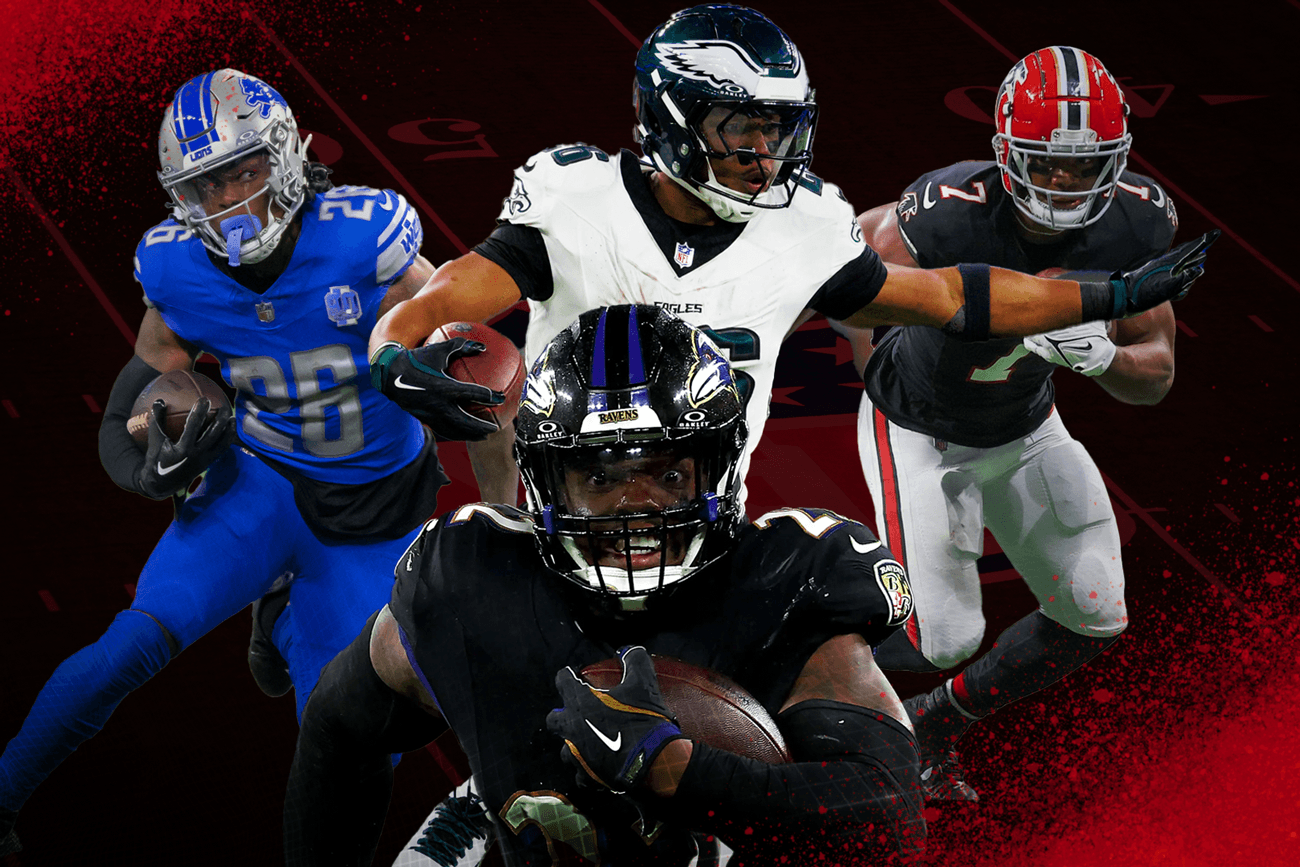
In 2021, the NFL only had seven 1,000-yard rushers. That was a historic dip in production, given that an extra game was added to the roster. '21 was the peak of the Spread-revolution in the NFL. Offenses had shifted to throwing the ball and playing much of their downs with 11 personnel on the field (one RB, one TE, and three receivers).
Defenses adjusted accordingly, playing more zone coverage and sub-packaged defenses. The two-high revolution started a year prior and was in full bloom. Even with all those light boxes (six or fewer in the box), offenses still didn't want to run the ball.
Running backs seemed to be an afterthought. In the summer of 2023, Derrick Henry even took to Twitter to voice his concern about the position's lack of pay. Over the past decade, teams have shifted to mobile quarterbacks and a running back-by-committee approach to offenses.
With so much money going to ballooning contracts for quarterbacks, wide receivers, and tight ends, the running back position seemed to be losing its luster. Today, only two running backs are over the $15 million mark. Compare that to 24 in the receiver group and four within the TEs.
Ironically, running backs are being asked to do more. Instead of being battering rams, offensive coordinators are asking their backs to add value to the passing game as well. In today's game, backs must contribute to the offense by catching passes, not just behind the line of scrimmage on screens.
This is where the separation within the position occurs. In the 2024 season, the position was more diverse than ever. Plus, there was a recommitment to the run game across the NFL landscape. Football is cyclical, and we saw the pendulum swing back this season.
In '24, offenses started to run the ball and utilize heavier personnel groupings. Nickel-based defenses across the league had to dust off their playbooks and relearn how to adjust to extra gaps and blockers created by TEs and fullbacks (Yes, the FB is also back!). The result was 16 running backs breaking the 1,000-yard mark, the highest in several years.
Looking at the landscape of RBs, how do we separate them? Using Field Vision's FV Pro, we can divide the running back group into clustered archetypes: Pure Runners, The Hybrids, Whole Tree Receivers, and The Normies. They all have to carry the ball, but how they are used in the passing game separates them into groups.
Pure Runners
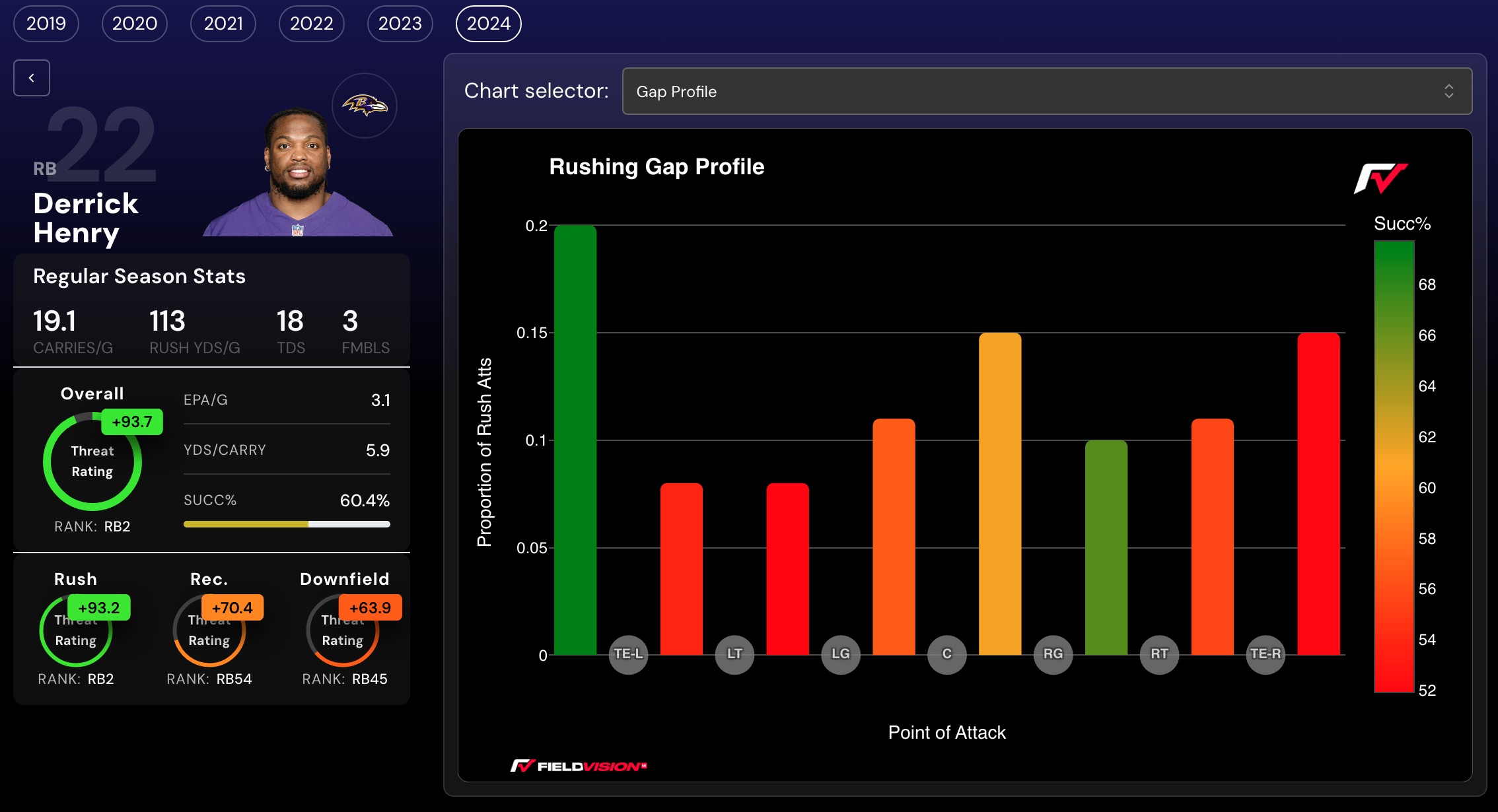
There are only two 'pure' running backs in the NFL, or backs that don't catch the ball at volume. Baltimore's Derrick Henry and Indianapolis' Jonathan Taylor both rushed for over 1,400 yards and caught fewer than 20 passes.
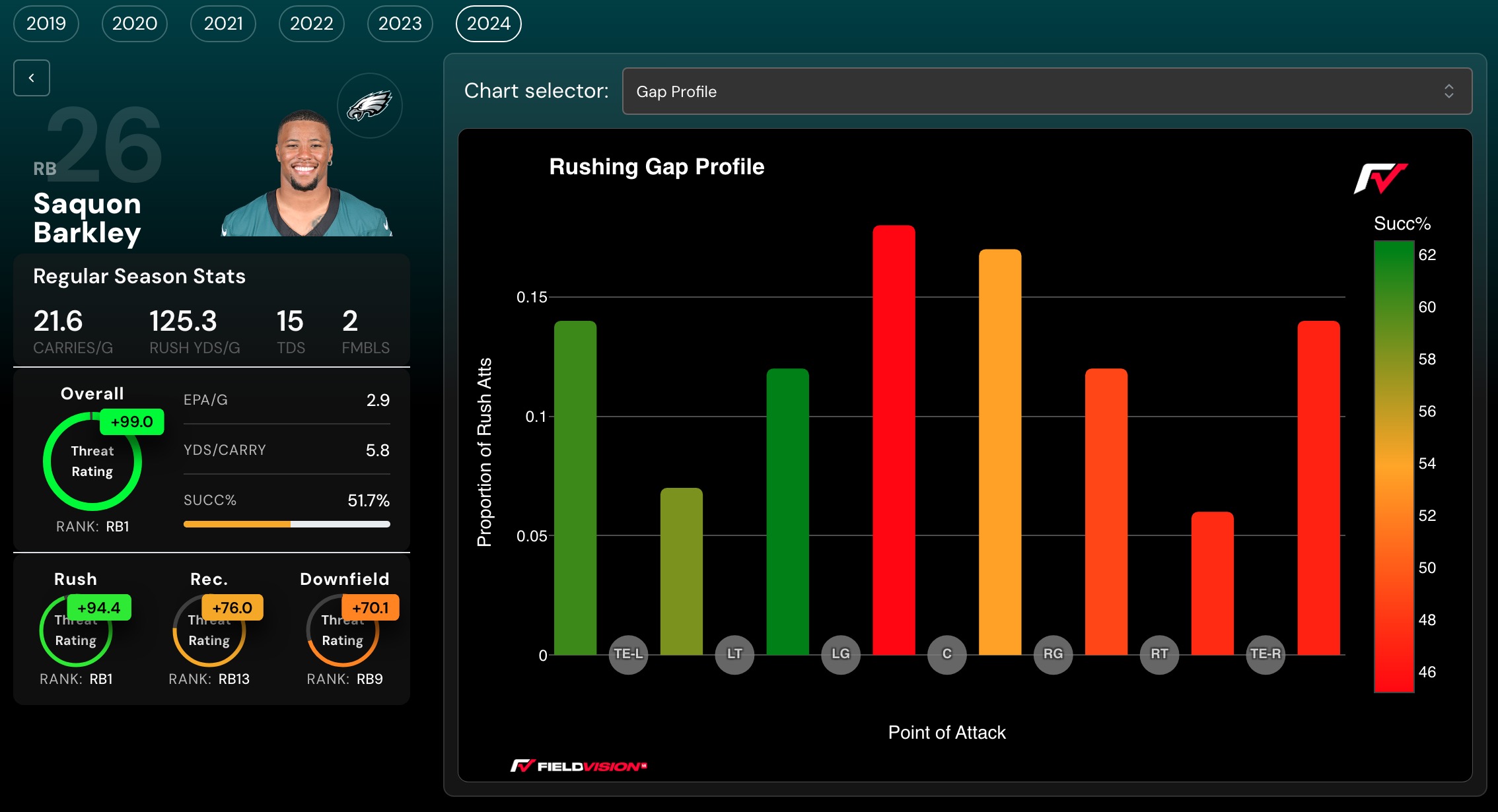
Expanding this group further, the Eagles' Saquon Barkley, who cleared the coveted 2,000-yard mark, the Rams' Kyren Williams, and the Bills' James Cook also fit into this category, but not as extreme. Each one cleared the 1,000-yard mark and had fewer than 40 targets on the season.
These running backs' primary objective is to run the ball, and each one excels in this area. The two best receivers in this group are Barkley and Cook. Both backs' numbers could be higher in a different offense.
Saquon is among the best receiving backs in the league and was ninth in downfield Threat Ratings. Cook's main target areas were on the box's perimeter, where the Bills mainly used him as a screen target.
Others to consider are Josh Jacobs (Packers), Najee Harris (Steelers), Joe Mixon (Texans), and Brian Robinson Jr. (Commanders).
The Hybrids
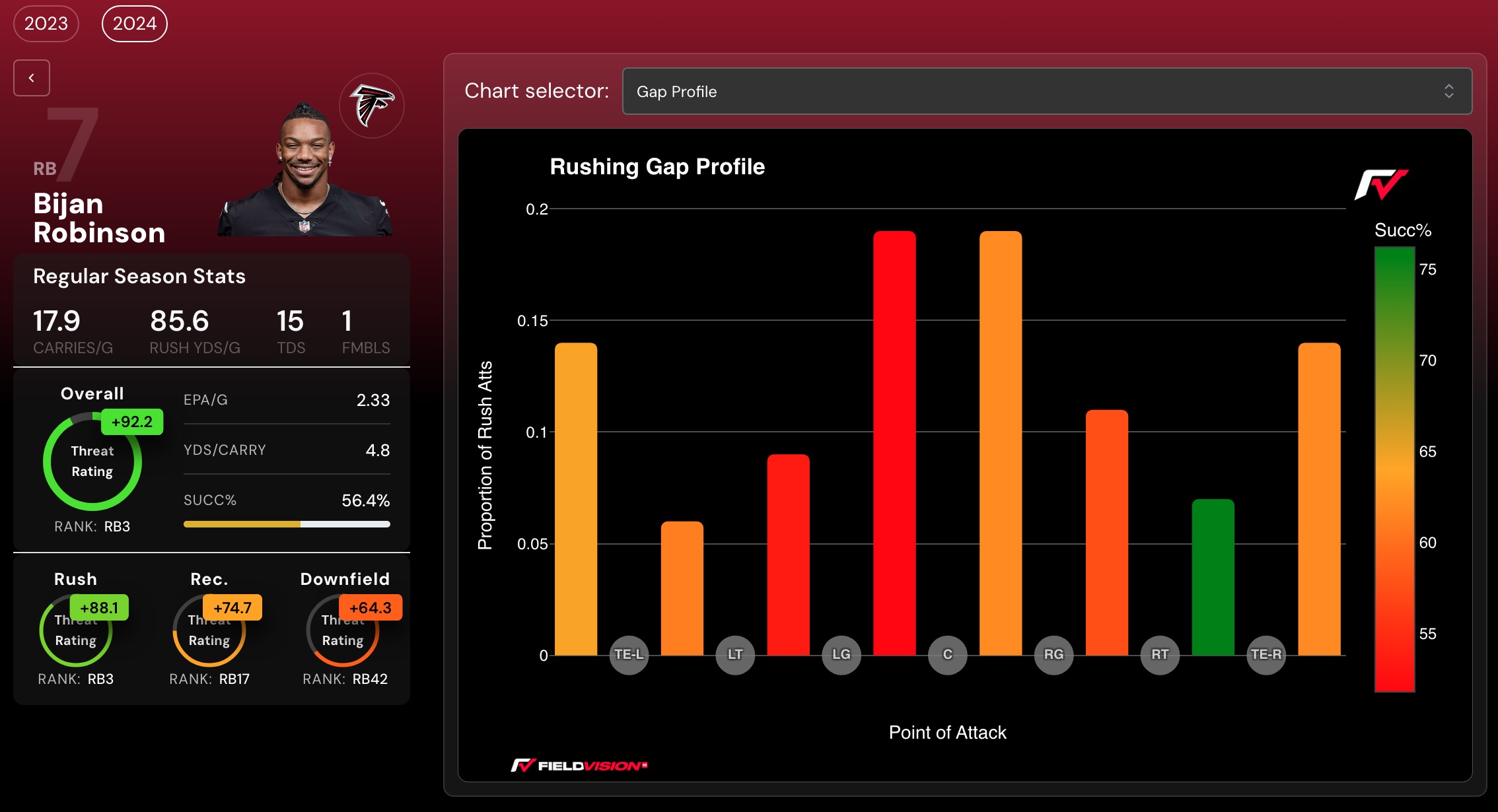
These are your modern running backs, and the names here are unsurprising. Only seven backs had over 1,000 yards rushing and 50+ targets. The Falcons' Bijan Robinson and the Lions' Jahmyr Gibbs were drafted in the first round of 2023 and have become immediate stars.

Robinson led the league in targets with 70, but Gibbs had more receiving yards. Both cleared the 1,400 mark. Each can run the whole route tree while carrying the load in the ground game.
The diversity in their route trees also sets them apart. Bijan had 70 targets, 25 of which came past the line of scrimmage. Gibbs had 63 total targets, 24 of which came past the line of scrimmage.
Others: Aaron Jones (Vikings), Tony Pollard (Titans), James Conner (Cardinals), and Chuba Hubbard (Panthers)
Whole Tree Receivers
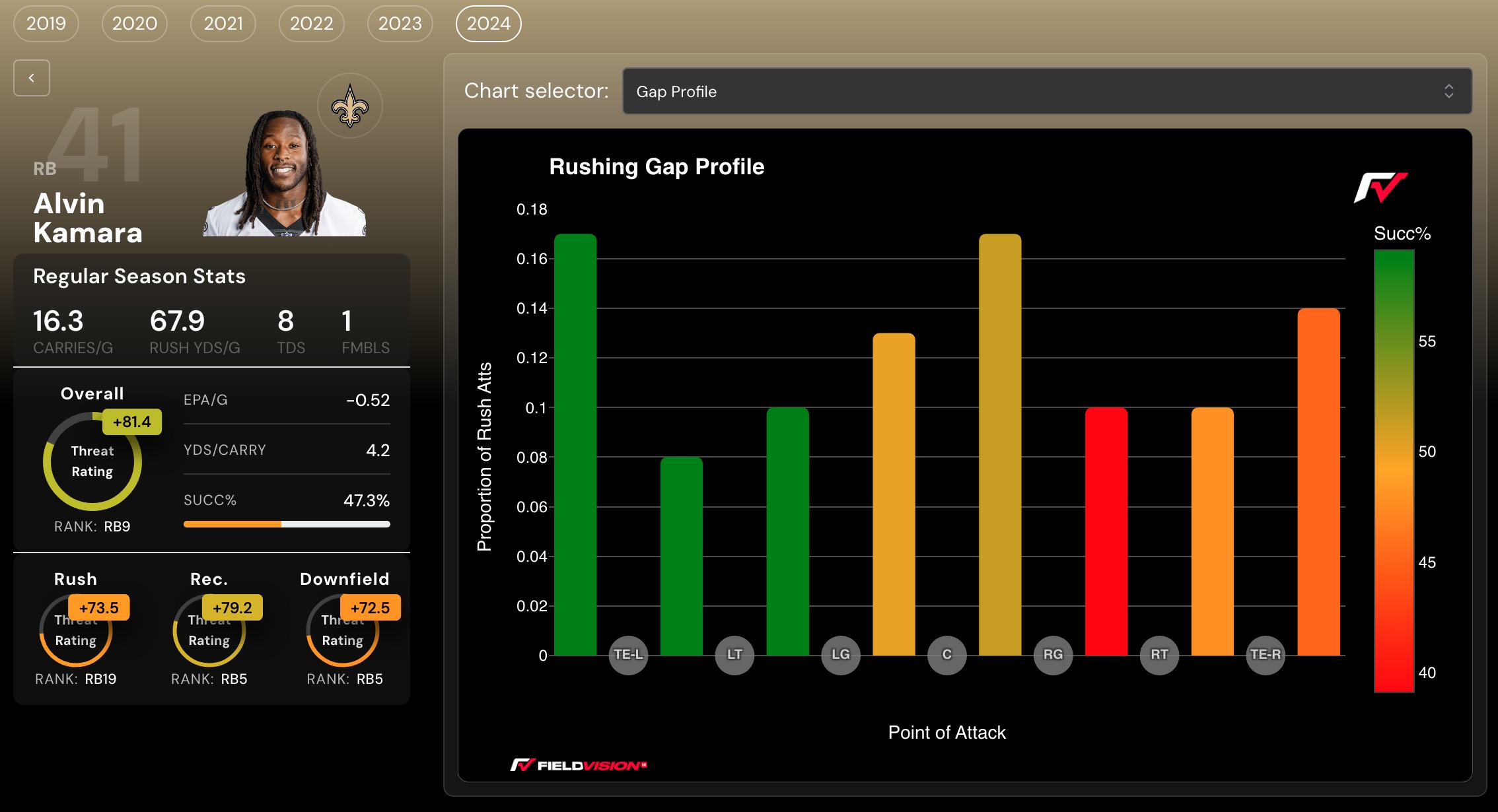
These running backs command the full route tree and are utilized past the line of scrimmage at volume. The poster child for this group is the Saints' Alvan Kamara, who had a league-leading 44 targets past the line of scrimmage.
Kamara is unique in that he is one of the best backs when carrying the ball, but he can also be used outside the box. The 49ers' Christian McCaffrey has similar usage when healthy.
The Bengals' Chase Brown was a close second with 40, but he didn't clear the 1,000-yard mark.
The leader in receiving yards past the line of scrimmage in 2024 was the Jets' Breece Hall, who accumulated 261 yards with only 876 yards rushing.
Javonte Williams (Cowboys) was the only other back to clear 30 attempts past the line of scrimmage, but he only had 513 yards rushing.
The Dolphins' De'vonn Achane is an interesting case, too. He was close to the 30 target mark past the line of scrimmage, but most of his work comes from screens behind the line of scrimmage.
The Bills' Ty Johnson led the NFL in targets deeper than 10 yards. He finished the year with six receptions for 156 yards and one touchdown.
The Normies
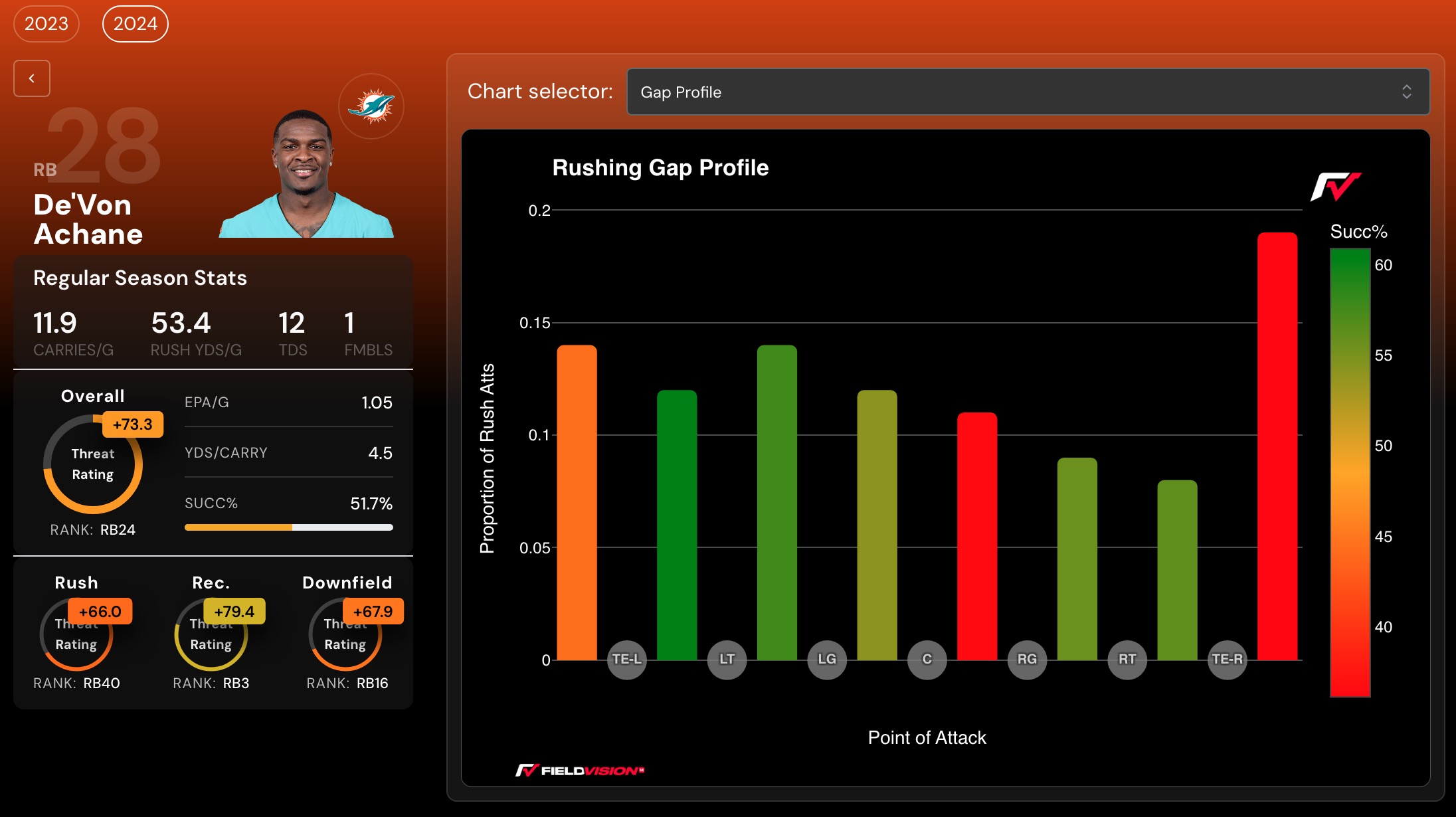
The typical usage for a running back in the passing game is behind the line of scrimmage as a check-down or screen receiver. The top three in targets behind the line of scrimmage are the Dolphins' De'von Achane (57), the Falcons' Bijan Robinson (45), and the Buccaneers' Bucky Irving (44).
Alvin Kamara, Breece Hall, the Buccaneers' Rachaad White, Jahmyr Gibbs, and James Conner are behind them.
The Dolphins used Achane's speed as a weapon, as did the Buccaneers with White. Both tied for the league leader in receiving touchdowns at six.
Top Five
So, who were the best overall running backs in 2024? Using Field Vision's Threat Ratings, here are the five best 1,000-yard backs from last season:
Derrick Henry (Ravens) - 18.89 [Threat/100]
Jahmyr Gibbs (Lions) - 15.83
Bucky Irving (Buccaneers) - 15.41
Saquon Barkley (Eagles) - 15.34
Bijan Robinson (Falcons) - 13.09
Honorable Mentions: James Cook (Bills), James Conner (Cardinals), Najee Harris (Steelers), Josh Jacobs (Packers), Chuba Hubbard (Panthers)
It appears the running back position is officially back. Offenses are running the ball, which puts the position front and center again. Saquon and Henry's season also highlights the importance of the position, though outliers.
The Giants did not pay arguably the best all-around back in the league, and it bit them in the end. He had a 2,000+ yard season and won a Super Bowl in the same division. Henry was a perfect fit behind Lamar and Baltimore's run-oriented offense.
The two backs from the 2023 draft, Bijan and Gibbs, look to be the new faces of the position as they carry the hybrid label into the future. All of this without much mention of Christian McCaffrey, who, when healthy, can challenge for the top spot as the best back in the league.
Looking at this year's draft, the crop might be one of the deepest ever. Boise's Ashton Jeanty and North Carolina's Omarion Hampton are slotted to be selected in the first round.
Jeanty looks to be this year's top back, as he was a production monster in college. He is adequate catching passes out of the backfield and is an elite pass protector for a young back. Most have Jeanty as one of their top ten talents, with Hampton closer to the back third of the first round.
Follow Cody Alexander at MatchQuarters.com, Twitter/X, Instagram, or TikTok.
As we dive in, we look forward to the conversation, debate, and your feedback. Hit us up at @fieldvisionmi on X, @fieldvisionsports on Instagram, or on our website www.fieldvisionsports.com.
